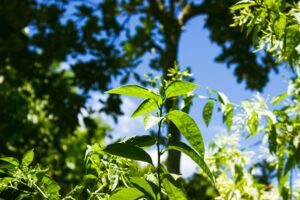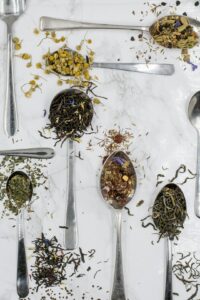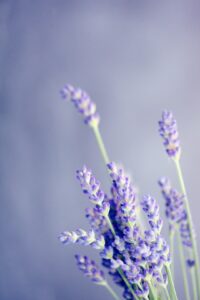Support our educational content for free when you purchase through links on our site. Learn more
[2023] Dried Herbs for Tea: A Comprehensive Guide to Growing and Using Herbs in Your Tea
Are you tired of the same old tea flavors? Looking to add a unique twist to your tea routine? Look no further than dried herbs for tea! In this comprehensive guide, we will explore everything you need to know about growing and using dried herbs in your tea. From the best herbs to grow to the various methods of drying and brewing, we've got you covered. So grab your favorite mug and let's dive in!
Table of Contents
- Quick Answer
- Quick Tips and Facts
- Choosing the Right Herbs
- Growing Your Own Herbs
- Drying Methods
- Brewing Herbal Tea
- FAQ
- Conclusion
- Useful Links
- Reference Links
Quick Answer
Dried herbs for tea are a fantastic way to add flavor and complexity to your favorite brews. Whether you're looking for a soothing chamomile tea or a refreshing mint infusion, dried herbs offer endless possibilities. By growing and drying your own herbs, you can ensure their quality and customize your blends to suit your taste preferences. Check out our selection of dried herbs for tea on Amazon, Walmart, and Etsy to get started!
Quick Tips and Facts
- Dried herbs retain their flavor and aroma for a long time, making them perfect for stocking up.
- Herbs like chamomile, lavender, and mint are popular choices for herbal tea blends.
- Growing your own herbs allows you to control the quality and freshness of your tea ingredients.
- Drying herbs can be done using various methods such as air drying, oven drying, or using a dehydrator.
- Herbal teas can be enjoyed hot or cold, and they offer a range of health benefits.
Choosing the Right Herbs
When it comes to choosing herbs for your tea, the options are endless. Here are some popular herbs to consider:
-
Chamomile: Known for its calming properties, chamomile is a classic choice for a soothing bedtime tea. It has a delicate floral flavor and a subtle sweetness.
-
Peppermint: Refreshing and invigorating, peppermint is a popular choice for digestive teas. It has a cooling menthol flavor that can help soothe an upset stomach.
-
Lemon Balm: With its bright citrusy flavor, lemon balm adds a refreshing twist to herbal tea blends. It is known for its calming effects and can help promote relaxation.
-
Lavender: Not just for potpourri, lavender can be used to create a fragrant and relaxing tea. It has a floral flavor with hints of sweetness.
-
Nettle: Nettle tea is known for its detoxifying properties and is often used to support overall wellness. It has a slightly earthy taste.
-
Rosemary: This aromatic herb adds a savory note to herbal tea blends. It pairs well with citrus flavors and can help improve digestion.
Remember to choose herbs that are suitable for tea consumption and avoid any that may have adverse effects or interfere with medications. If you're unsure, consult with a healthcare professional.
Growing Your Own Herbs
Growing your own herbs is a rewarding experience that allows you to have a fresh supply of ingredients right at your fingertips. Here are some tips for growing herbs for tea:
-
Choose the right location: Most herbs thrive in sunny locations, so choose a spot in your garden or balcony that receives ample sunlight.
-
Prepare the soil: Herbs prefer well-draining soil, so make sure to amend your soil with compost or organic matter before planting.
-
Start from seeds or seedlings: You can start herbs from seeds or purchase young seedlings from a local nursery. Follow the instructions on the seed packet or consult with the nursery for specific care guidelines.
-
Water regularly: Herbs generally prefer moderate watering, so make sure to water them regularly. Avoid overwatering, as it can lead to root rot.
-
Prune and harvest: Regular pruning encourages bushier growth and ensures a continuous supply of fresh leaves for tea. Harvest herbs in the morning when the essential oils are at their peak.
-
Dry the herbs: Once you've harvested your herbs, it's time to dry them for tea. Let's explore different drying methods in the next section.
Drying Methods
Drying herbs is essential to preserve their flavor and aroma. Here are three common methods for drying herbs:
-
Air drying: This is the simplest and most traditional method of drying herbs. Bundle a small bunch of herbs together and hang them upside down in a well-ventilated area away from direct sunlight. Once the herbs are completely dry, remove the leaves from the stems and store them in airtight containers.
-
Oven drying: If you need to speed up the drying process, you can use your oven. Place the herbs on a baking sheet lined with parchment paper and set the oven to the lowest temperature (usually around 150°F or 65°C). Keep the oven door slightly open to allow moisture to escape. Check the herbs regularly and remove them once they are dry.
-
Dehydrator: A dehydrator is a convenient tool for drying herbs. Follow the manufacturer's instructions for temperature and drying time. Once the herbs are dry, store them in airtight containers.
Remember to label your dried herbs with the name and date to keep track of their freshness. Properly dried herbs can retain their flavor for up to a year.
Brewing Herbal Tea
Now that you have your dried herbs ready, it's time to brew some delicious herbal tea. Here's a simple method to get you started:
Ingredients:
- 1 teaspoon dried herb or herb blend
- 8 ounces (240 ml) boiling water
Instructions:
- Place the dried herb or herb blend in a tea infuser or a teapot.
- Pour boiling water over the herbs and let steep for 5-10 minutes, depending on the desired strength.
- Remove the infuser or strain the tea to remove the herbs.
- Enjoy your homemade herbal tea!
Feel free to experiment with different herb combinations and steeping times to create your perfect cup of tea. You can also add honey, lemon, or other flavorings to enhance the taste.
FAQ
What herbs can you dry for tea?
You can dry a wide variety of herbs for tea, including chamomile, peppermint, lemon balm, lavender, nettle, and rosemary. Experiment with different herbs to find your favorite blends.
Can I make tea with dried herbs?
Absolutely! Dried herbs are perfect for making tea. They retain their flavor and aroma, making them ideal for brewing a delicious cup of herbal tea.
How do you make tea with dried herbs?
To make tea with dried herbs, simply steep the herbs in boiling water for a few minutes. Remove the herbs and enjoy your homemade herbal tea.
What herbs are best to mix together for tea?
The best herb combinations for tea depend on your personal taste preferences. Some popular combinations include chamomile and lavender, mint and lemon balm, and nettle and rosemary. Feel free to experiment and create your own unique blends!
Can I drink herbal tea every day?
Drinking herbal tea in moderation is generally safe for most people. However, if you have any underlying health conditions or are taking medications, it's best to consult with a healthcare professional before making herbal tea a daily habit.
Conclusion
Dried herbs for tea offer a world of flavors and aromas to explore. By growing and drying your own herbs, you can customize your tea blends and ensure their quality and freshness. Whether you're looking for a soothing chamomile tea or an invigorating mint infusion, the possibilities are endless. So why not embark on a tea-growing adventure and elevate your tea experience with dried herbs? Shop for dried herbs for tea on Amazon, Walmart, and Etsy to get started!
Useful Links
- Shop Dried Herbs for Tea on Amazon
- Shop Dried Herbs for Tea on Walmart
- Shop Dried Herbs for Tea on Etsy
- Growing Teas™ Official Website










